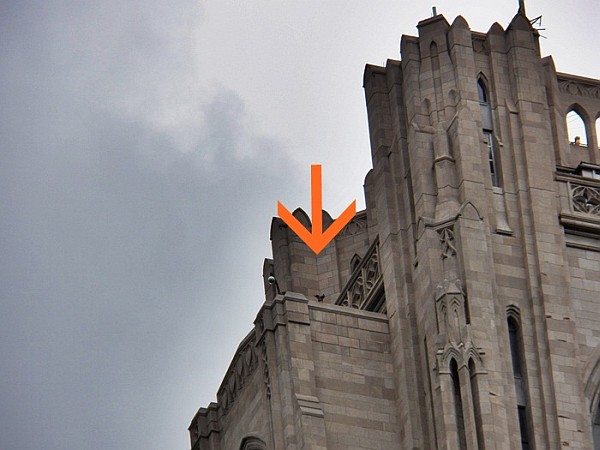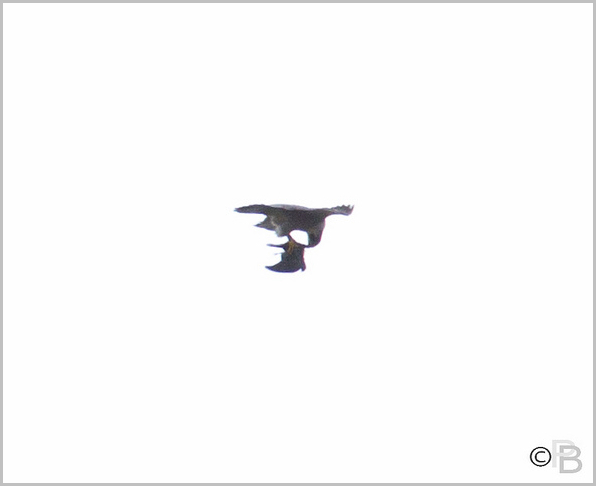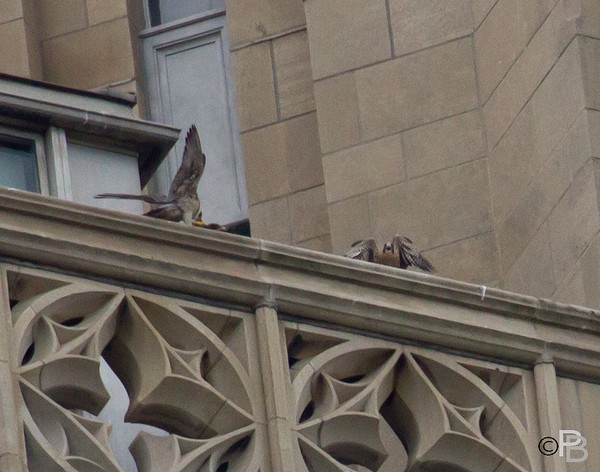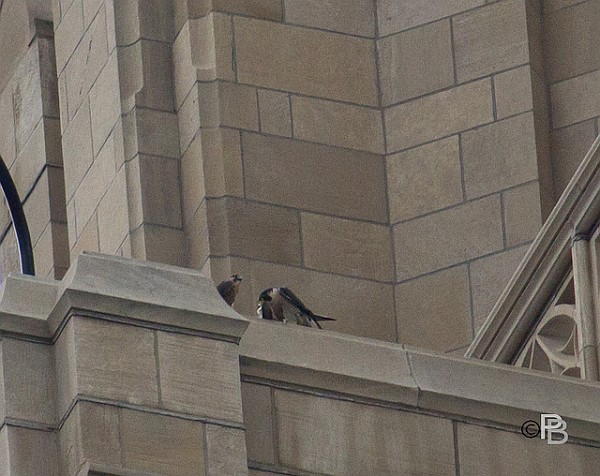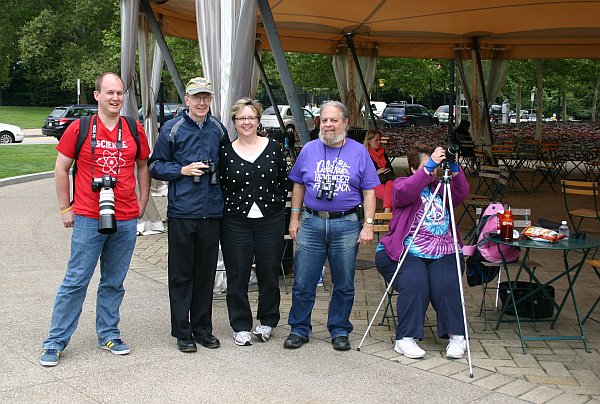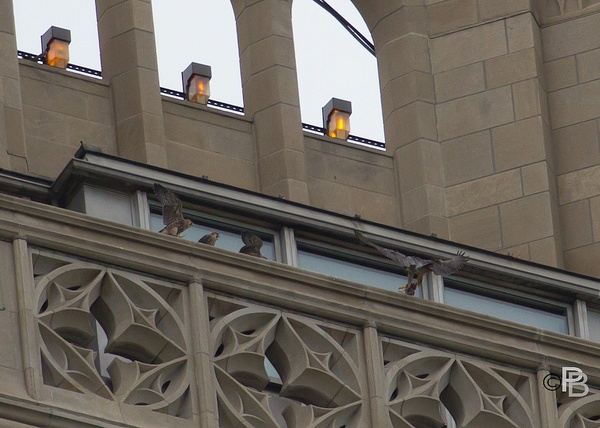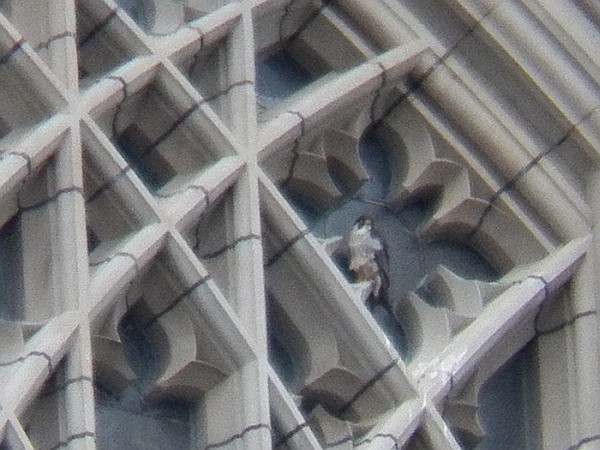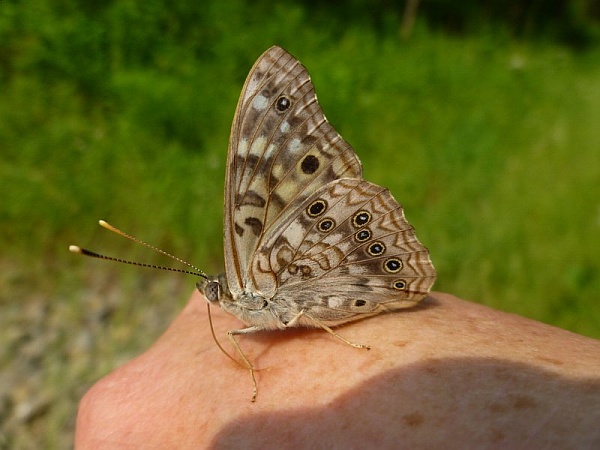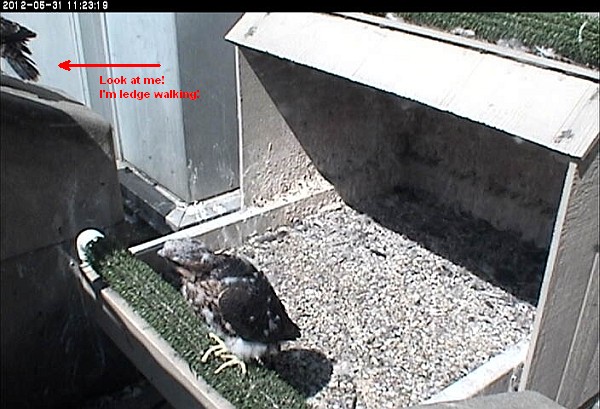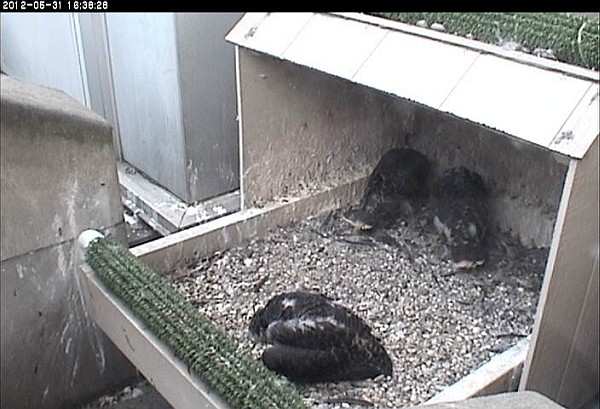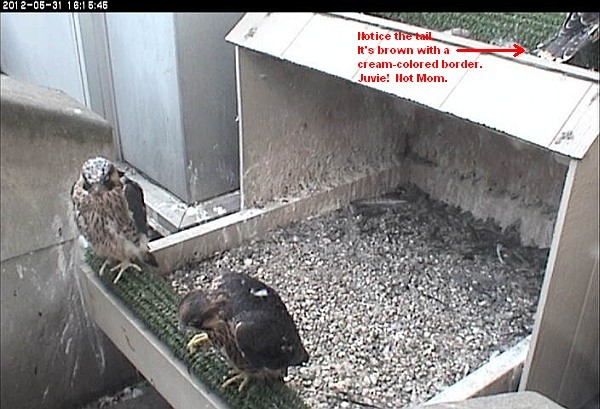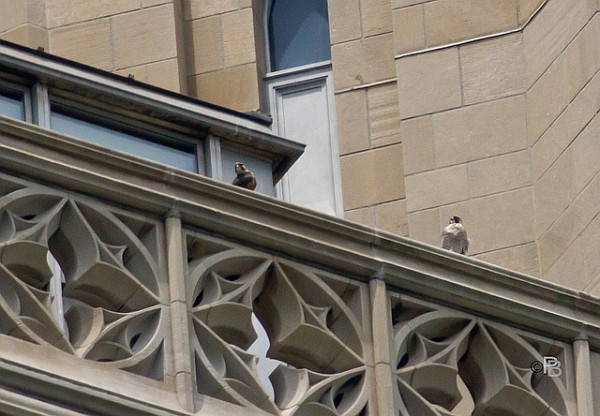
Yesterday I said I was taking a break from peregrines — but that was only on the blog. Spurred by surprisingly good weather I decided to make a driving tour of peregrine nest sites in Allegheny County. I wanted to know if the nestlings at each site had flown.
Here’s what I found.
Cathedral of Learning, University of Pittsburgh:
I started and ended my tour at Schenley Plaza watching Dorothy, E2 and their three youngsters.
My morning stop was very brief — only 10 minutes — but in that time I saw both parents and all three “kids.” Two were ledge-walking while the third waited on the green nest perch, seen via the web on my cellphone.
As I left Oakland I posted an update to Pittsburgh Falconuts. When I returned at 3:00pm I found an impromptu Fledge Watch in progress with John English, Peter Bell and Anne-Marie Bosnyak. We had been emailing/posting on the road all day, finally meeting up at the tent.
John and Peter said I’d missed Dorothy on the nestrail with her first ledge-walker (Peter Bell’s photo above) and some great flight demonstrations. Thankfully Dorothy and E2 kited again and flew loop-the-loops around the building. Wow!
As of last evening, none of the three nestlings had flown. Maybe one will fly today. Maybe tomorrow.
Downtown Pittsburgh:
They’re fledging!
As I suspected the youngsters at this nest are slightly older than the Pitt birds so they’re already making their first flights. When I arrived at 10:15am I saw Louie watching the nest site and one youngster at the nest opening. I could tell a fledgling was probably on a nearby roof because Louie was watching that roof and smaller birds were giving alarm calls. Unfortunately it was impossible to see the rooftop.
I posted an update and Anne-Marie swung by for a look. She was just going to drive through but stayed an hour because (as she wrote in email)…
Downtown peregrine fledged. Sitting on corner of [Point Park] academic hall. Mom or Dad visited juvie on bldg here. Saw one in a dive for food and then 2 turkey vultures came cruising by and D or L started screeching and flying about! Our juvie is conveniently perched so it can be viewed from Nathans where famished falcon watchers can get a bite to eat! ;-).
During the nesting season Dori and Louie’s site was a secret but now the chicks are out of the nest so I can show you where it is.
Here’s the nest site with an about-to-fledge youngster perched at the edge (red arrow). The site is a narrow air shaft at the back of a building between Smithfield and Wood Streets. It’s on the right as you drive down Third Avenue. The building is a data center so all the windows are bricked up.
Wouldn’t you know peregrines would choose a building where no one could look at them! (Click on the photo below for a wider view.)
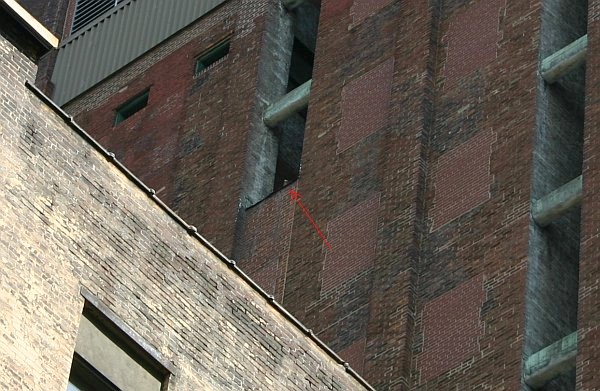
The Downtown youngsters are in the vicinity of Point Park University so their parents watch from the top of Lawrence Hall. Here’s Louie perched at the roof peak yesterday morning. No sign of Dori. Maybe she was watching a fledgling perched elsewhere.
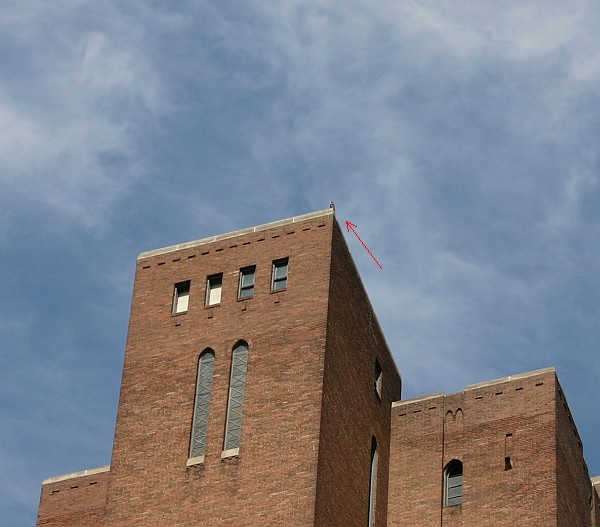
If you’re Downtown near Point Park University, keep looking up.
Tarentum Bridge:
Thanks to Rob Protz’ observations, the PA Game Commission was able to confirm Friday that peregrines nested on the Tarentum Bridge. Beth Fife reported two adults and one feathered juvenile close to fledging.
I drove to Tarentum in hopes of seeing the family in action. The peregrines favor the upriver side of the bridge between the left abutment and the New Kensington hillside so I went to the end of Tarentum’s Wood Street (another Wood Street!) and stood at the river’s edge.

Unfortunately the bridge is so far away that you really need a scope to see anything. I don’t have a scope but I did see an adult fly in and perch above the abutment.
If you’d like to see peregrines easily come to Pitt Peregrine Fledge Watch at the Schenley Plaza tent.
UPDATE: Thunderstorms are predicted from noon to 4:00pm so today’s watch will start at 11:00am and last until it rains or until 2:00pm — whichever comes first. Click here for the rest of the schedule or follow @KStJBirdlog on Twitter or Kate StJohn on Facebook for Fledge Watch updates.
(top photo by Peter Bell, remaining photos by Kate St. John)
